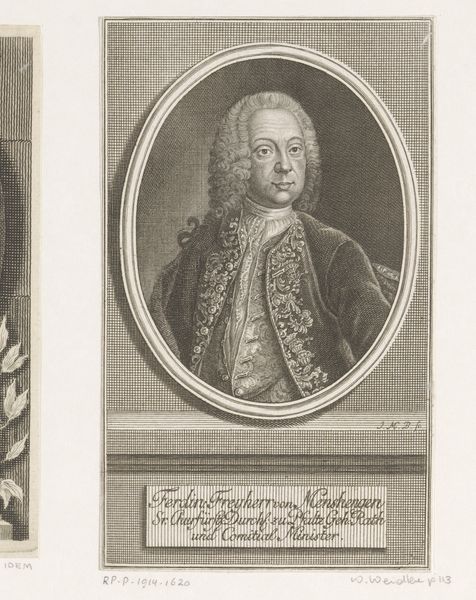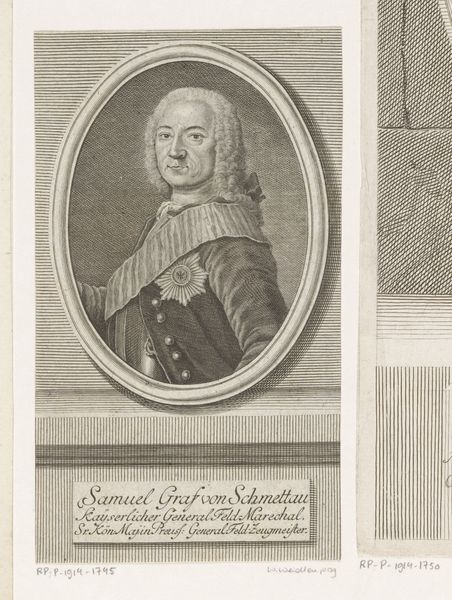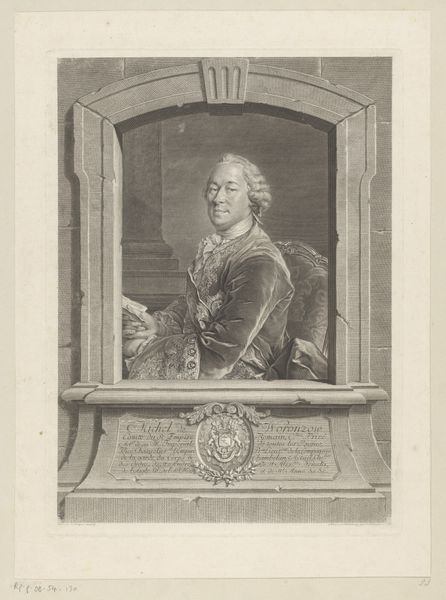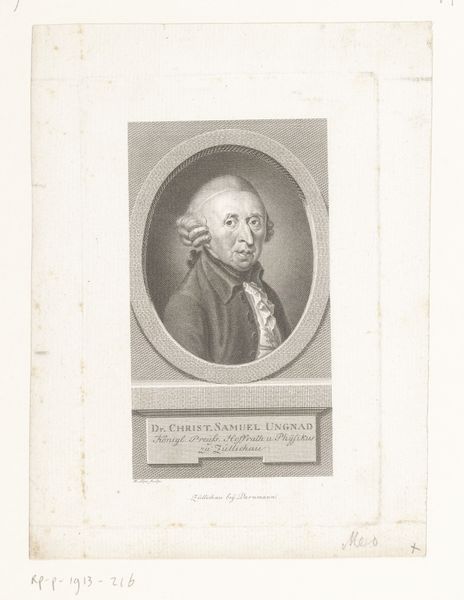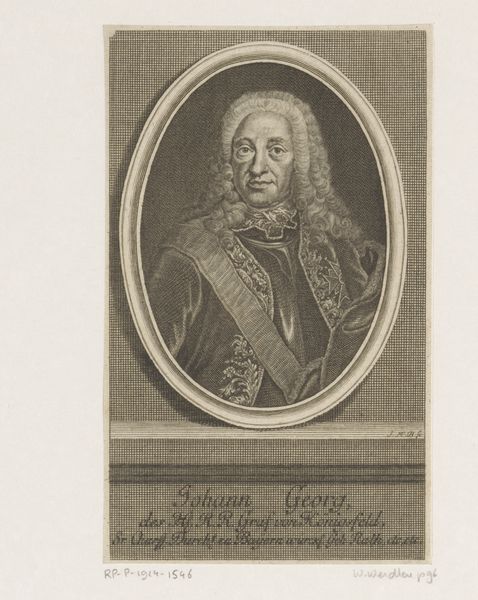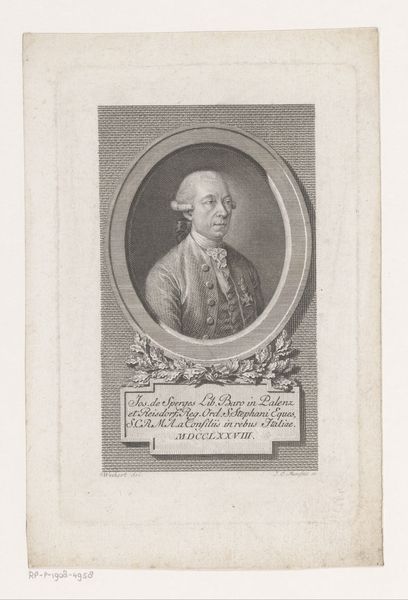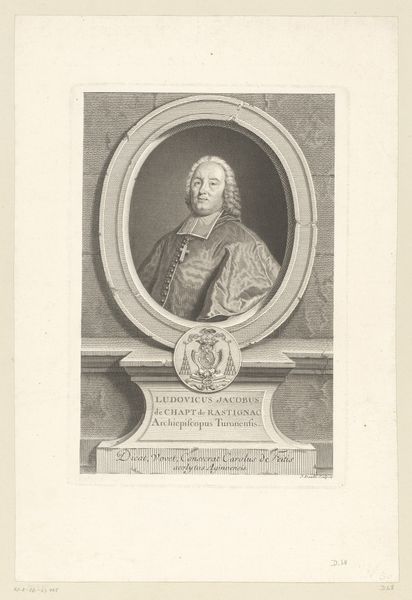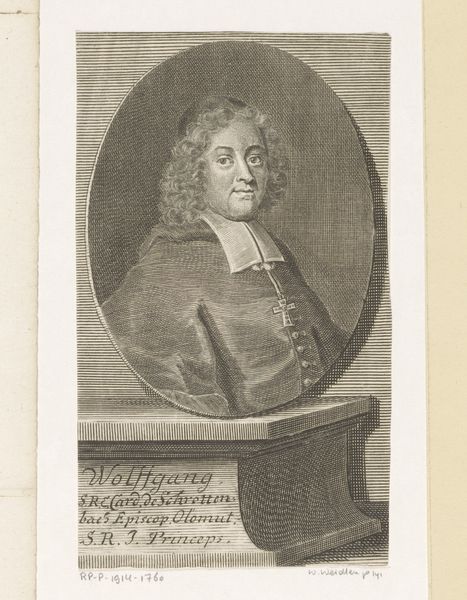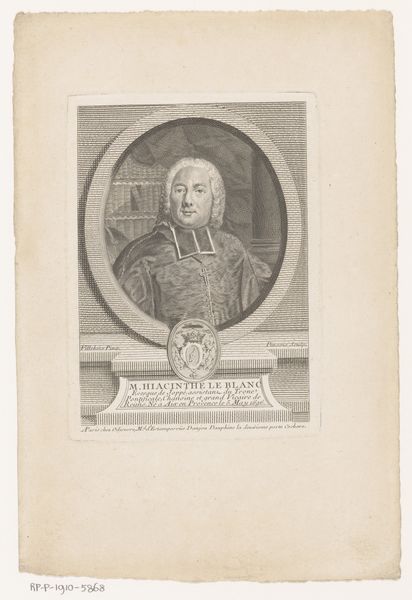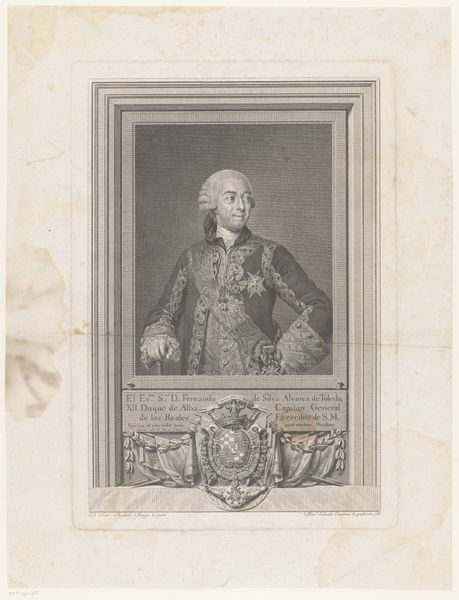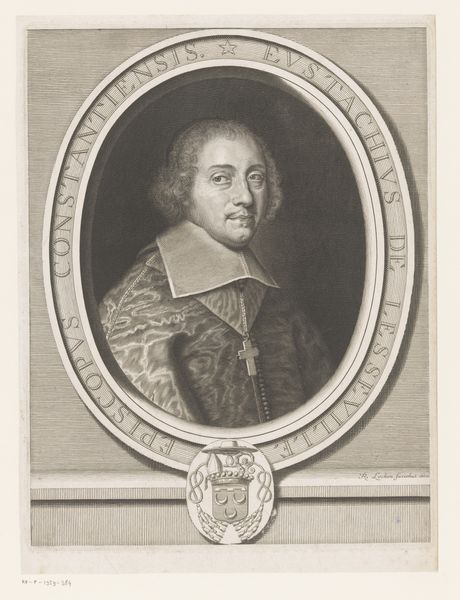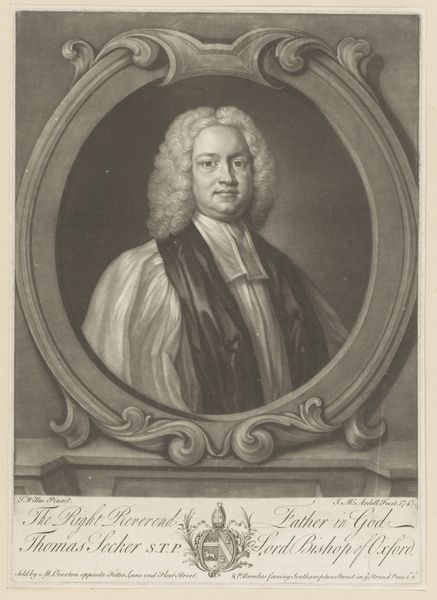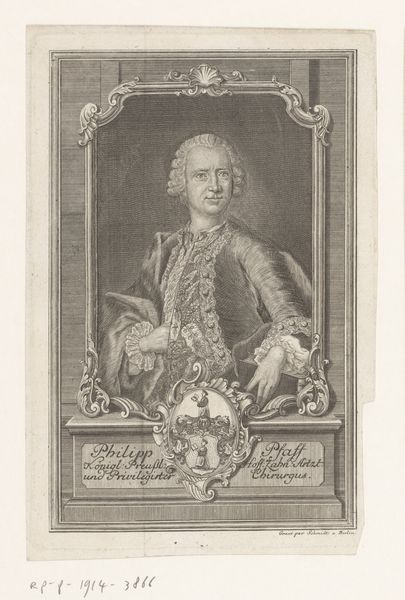
#
yellowing
#
aged paper
#
toned paper
#
homemade paper
#
vintage
#
photo restoration
#
parchment
#
historical photography
#
old-timey
#
columned text
Dimensions: height 171 mm, width 104 mm
Copyright: Rijks Museum: Open Domain
Curator: Here we have Johann Martin Bernigeroth's "Portret van Johann Franz von Kesselstatt," created sometime between 1743 and 1767. It's a fascinating piece on, what appears to be, aged paper. Editor: Oh, immediately strikes me as formal. A serious gent peering out, encircled, almost floating against those severe, regimented lines. A man very conscious of his position, wouldn't you say? It gives off an air of... self-importance, maybe? Curator: Certainly, the composition suggests a deliberate emphasis on status. The oval frame within a rectangular format creates a structured viewing experience. It invites the viewer to focus intently on the subject's face and attire. Editor: Those lines, they hem him in! It's like he's in a very stylish cage. Does this tight framing speak to the restrictions placed on such men? Courtly expectations, societal pressures perhaps? Curator: Possibly, though it could also signify the limits of representation. The artist is presenting a constructed image, not necessarily a literal reflection of the man himself, a tension, of course, found throughout portraiture. Editor: Mmm, maybe. Look at those wig curls, though! Each stroke painstakingly rendered, suggesting artistry yet strangely static. Trapped perfection perhaps? Are we supposed to be impressed or subtly question such display? It’s almost comical in its rigidity, like a satire waiting to burst forth. Curator: The contrast in textures – the soft wig versus the harder lines of the frame, or his formal robes – plays a vital role. Consider, too, the etching technique, its contribution to the work’s graphic qualities... it emphasizes form and line over softer, painterly effects. Editor: Yes, that's true, I think what stays with me, really, is how effectively that starkness conveys a mood that lingers. This isn’t just documentation. Curator: Agreed. The portrait transcends mere representation. Bernigeroth offers a considered visual analysis of power and perception within the context of the time, as viewed through its structural framework. Editor: So, what seems like a simple portrait is really a dialogue—a conversation about duty, artifice, and maybe, just maybe, a hint of the person hidden beneath the finery. Thanks for pointing that out.
Comments
No comments
Be the first to comment and join the conversation on the ultimate creative platform.
